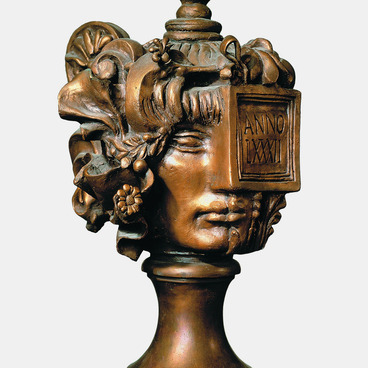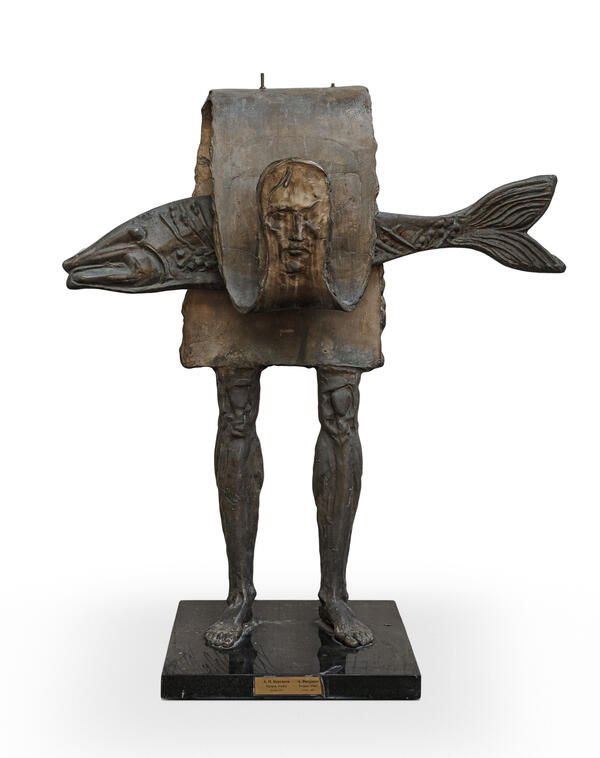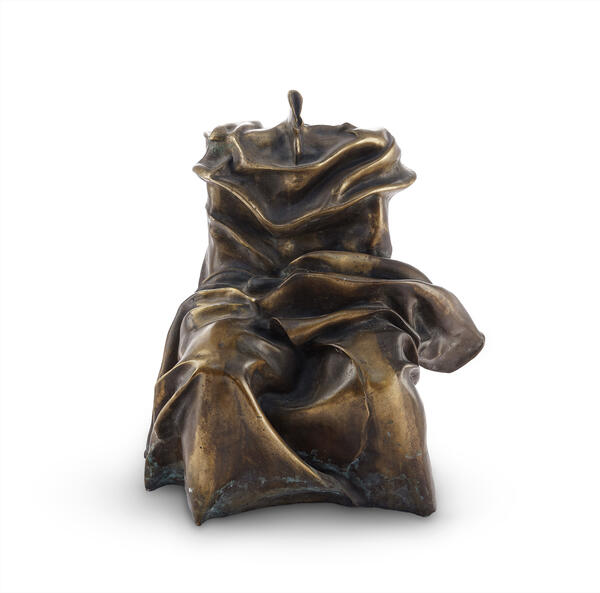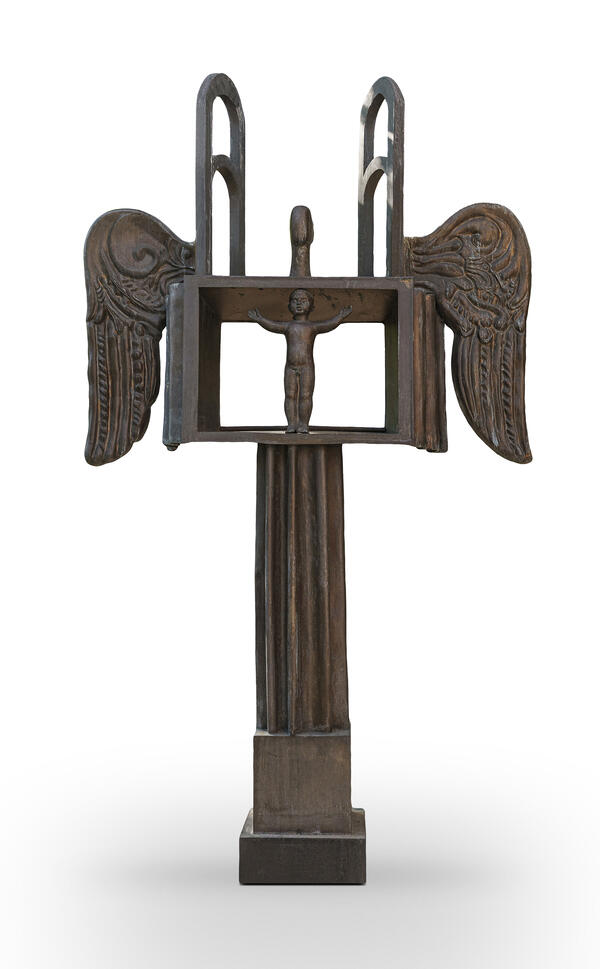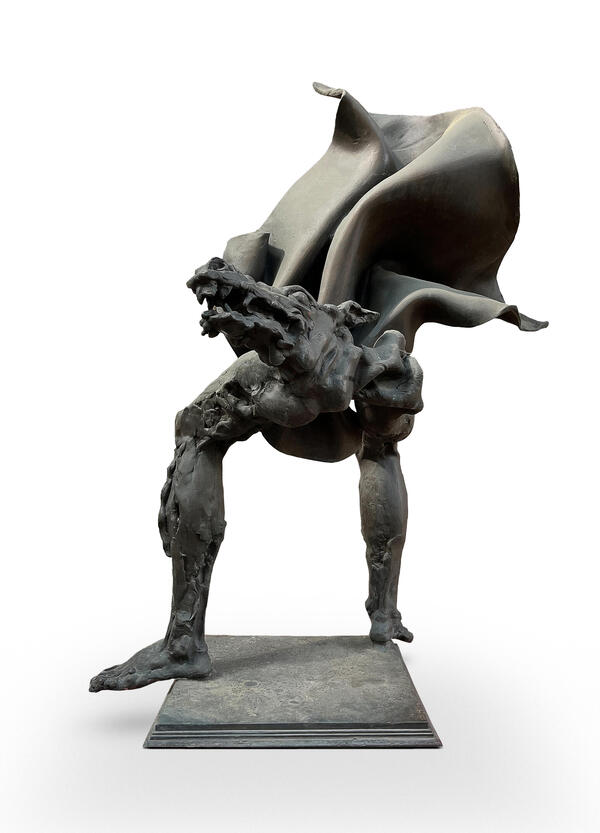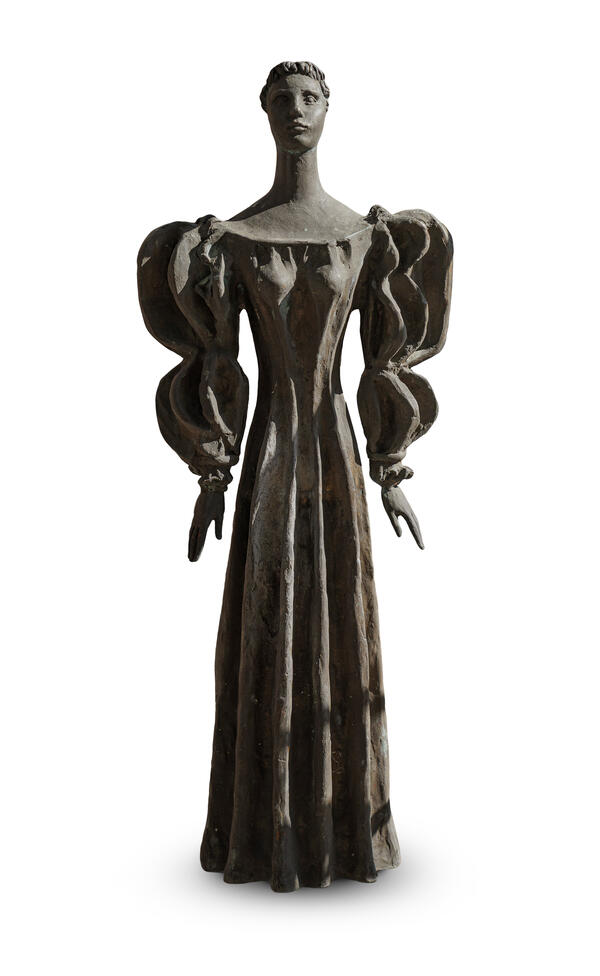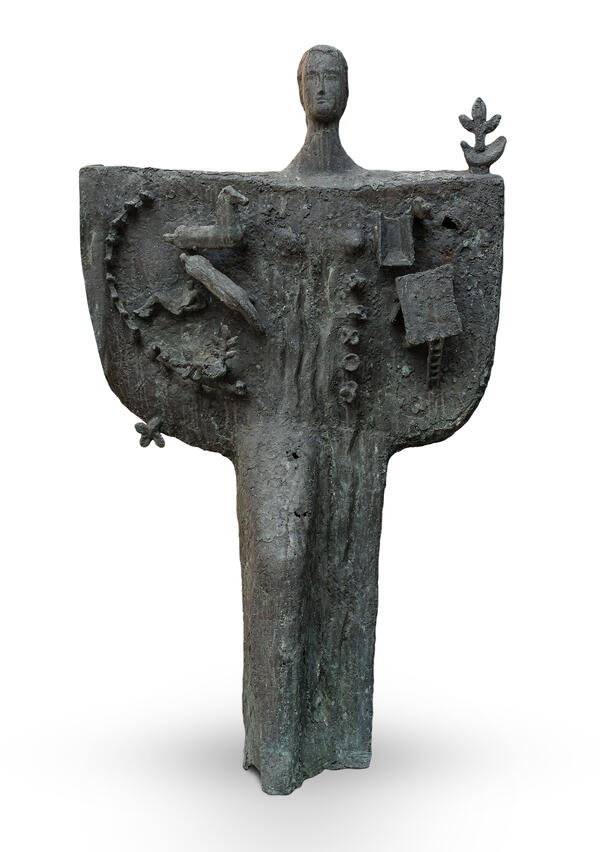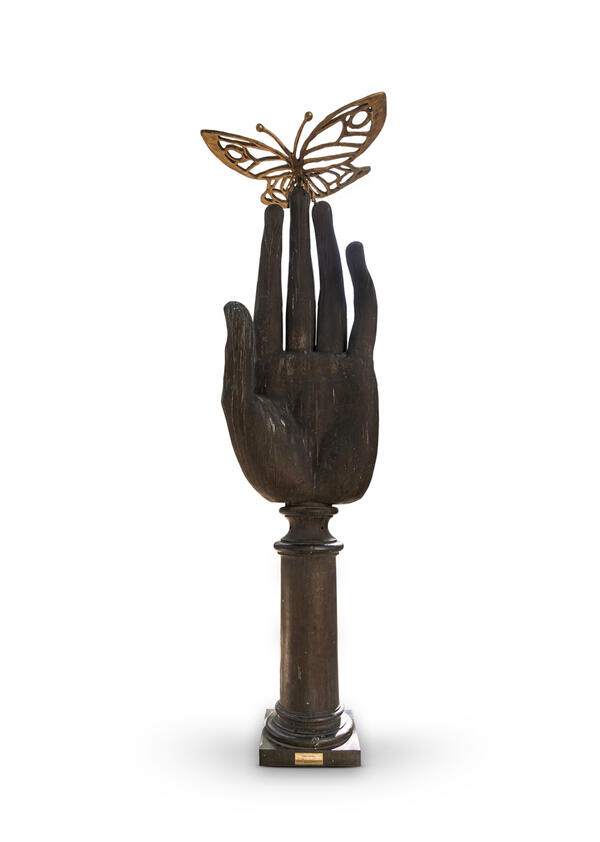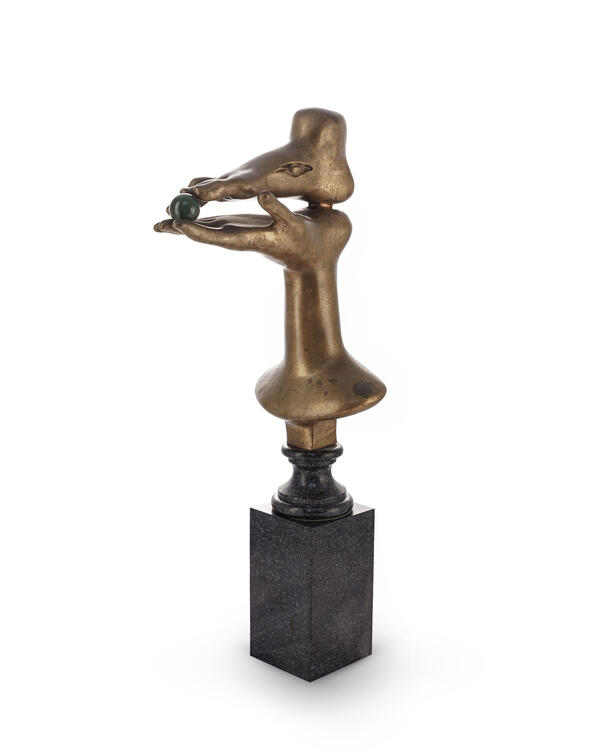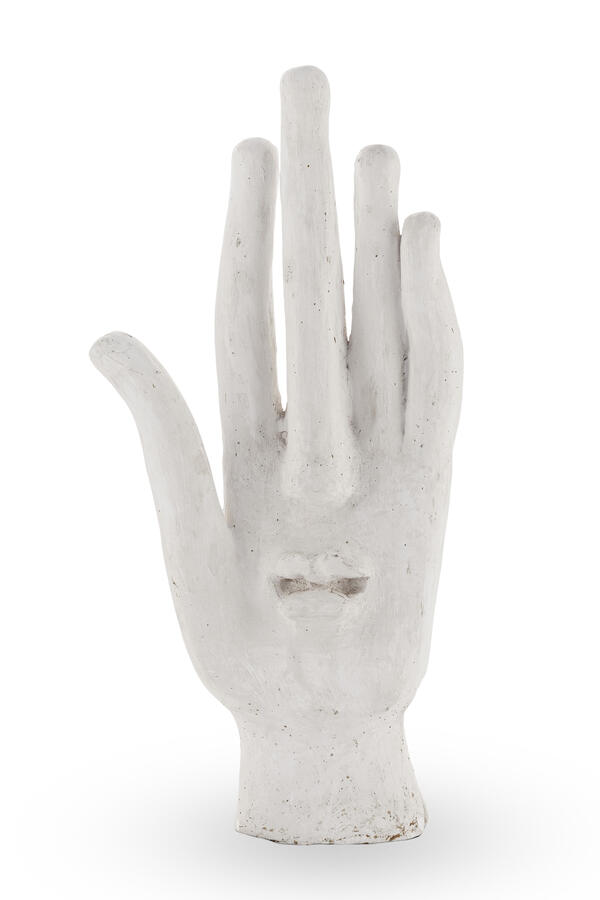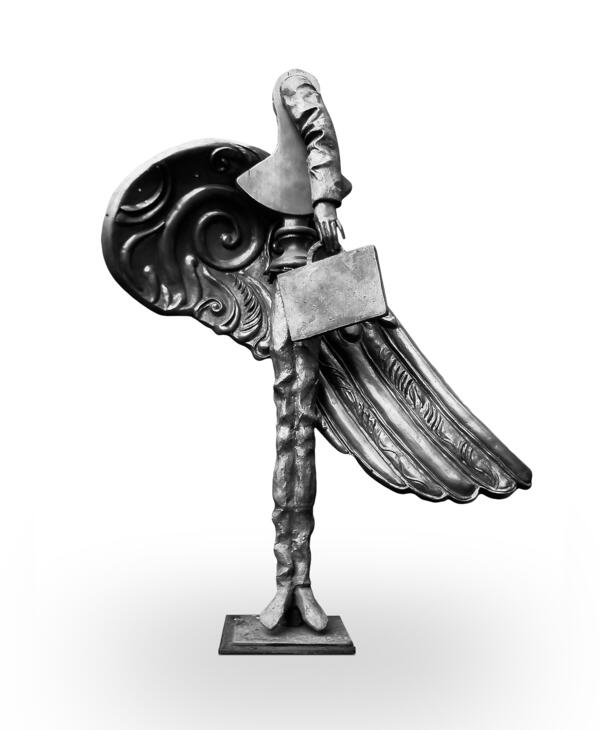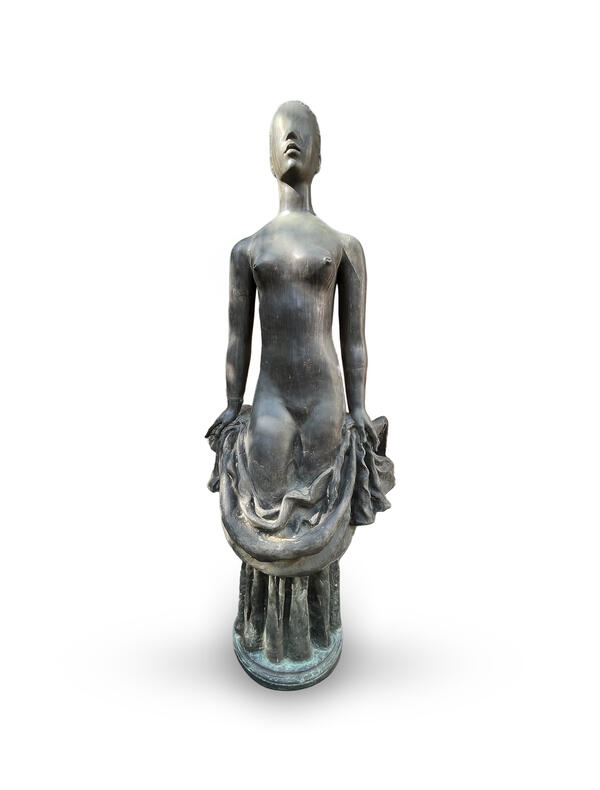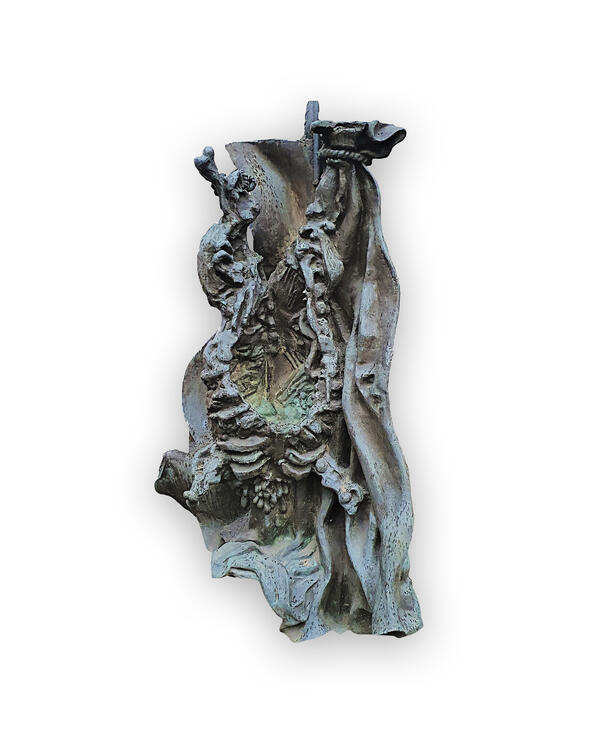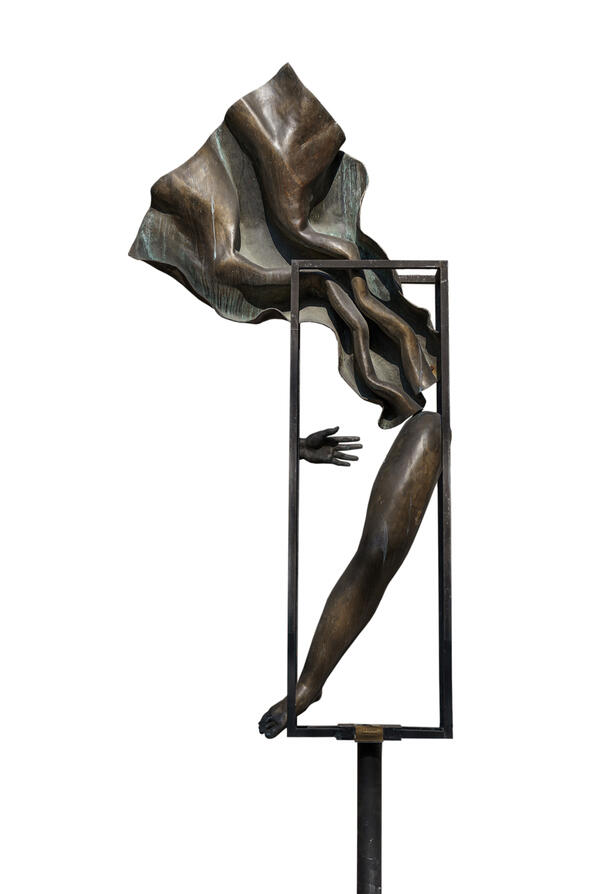Images of a young girl with a swan can be found throughout the history of world art. They can be traced back to the Greek myth of Leda and the Swan. Artists began to depict this story in ancient times, but it emerged more prominently during the Renaissance. Famous artists who turned to this subject include Peter Paul Rubens, Paolo Veronese, Nicolas Poussin, Correggio, François Boucher, Paul Cézanne, Gustave Moreau, and Salvador Dalí.
Alexander Burganov’s sculptural composition is elegant and delicate. The scene is framed, emphasizing the dialogue with classical painting. In the center, there is a beautiful young woman with a swan at her feet, its wings spread wide. Behind her, draperies flutter in the wind, also resembling wings that extend beyond the frame.
In folklore and mythology, the image of the swan is always lyrical. In many legends and myths, a young woman (often a princess) transforms into this beautiful, snow-white bird. Russian fairy tales often mention swan maidens who shed their swan skins on the shore and turn into beautiful women, bathing in the water. This image was romanticized by Alexander Pushkin and depicted in Mikhail Vrubel’s “The Swan Princess”.
The monumental sculpture is placed on a tall column and stands above viewers, enhancing the illusion of flight. Like many of Alexander Burganov’s artworks, “Flight” explores an individual with their inner world and symbolizes freedom and the ability to transcend reality and move beyond the boundaries. The title emphasizes the theme of striving for a flight.
Human and bird figures, symbolizing flying, aspiring, and moving towards something are common in Alexander Burganov’s works.
The sculptural composition is installed in
Gagarinsky Lane, close to the Burganov House. It welcomes visitors and creates
a sense of freedom and liberation from internal and external restrictions. This
sculpture also adds to the décor of the lane and draws the attention of
passersby with its beauty and sense of freedom.


